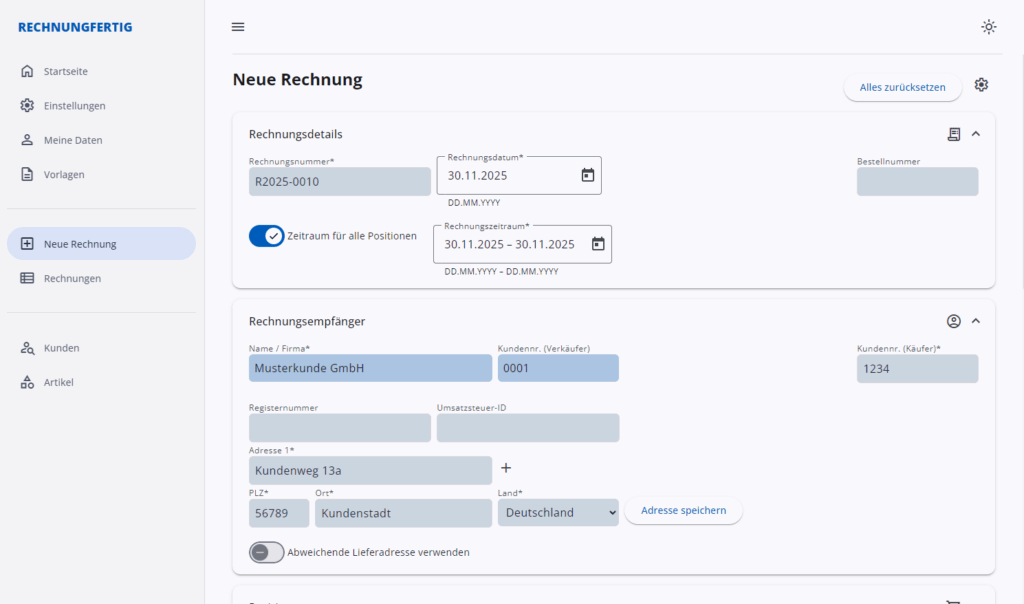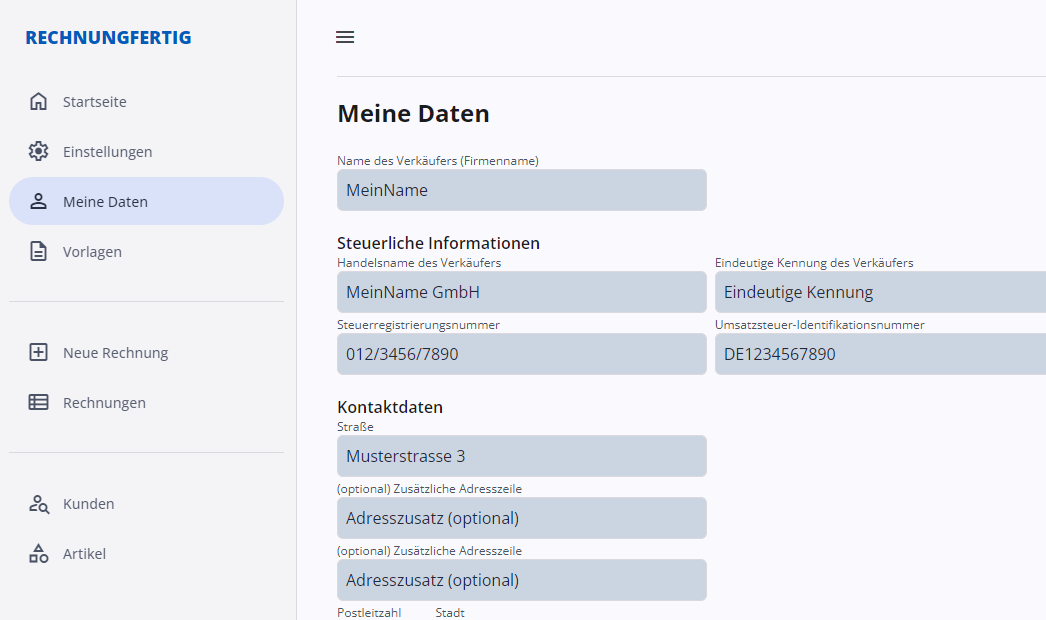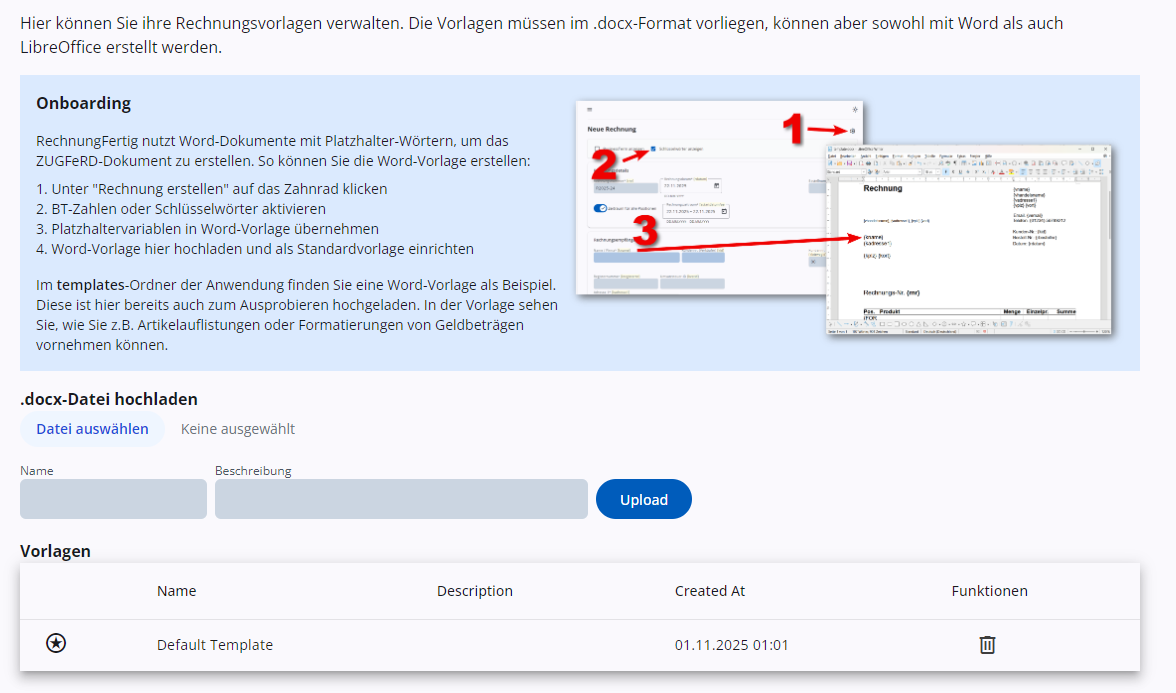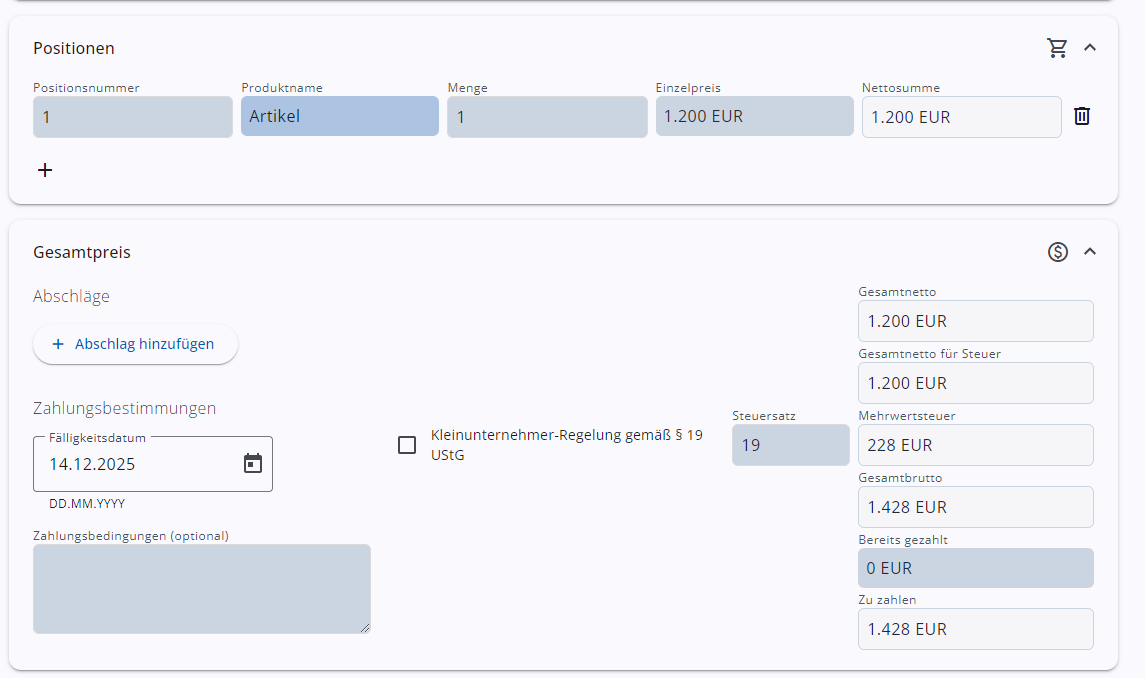Warum RechnungFertig?
Weil viele Einzelunternehmer und Selbständige keine komplizierte Software mit Abo-Bezahlmodell benötigen


Rechnungen erstellen
Erstelle Rechnungen und verschicke sie im Factur-X Format oder als ZUGFeRD-Datei im PDF-Format mit Anhang.

Rechnungslayouts
Templates für Rechnungen können in Word erstellt und für die Erzeugung der PDF-Rechnung benutzt werden

Keine Cloud
Alle Daten werden lokal gespeichert und können auch mit anderen Programmen geöffnet werden.

Kein Abo
Kein Abo, keine Werbung. Sie kaufen einmal die Software und können Sie danach solange benutzen, wie sie wollen.

An wen richtet sich RechnungFertig?
RechnungFertig richtet sich vor allem an Selbständige und Einzelunternehmer, die bislang gut damit zurecht kamen, ihre Rechnungen in Word zu erstellen und jetzt einfach nur einen günstigen Weg suchen, die technischen Anforderungen der E-Rechnung zu erfüllen. Zum Beispiel:

Berater

Coaches

Nebenberufstätige
Wann kommt RechnungFertig?
Eine erste Version ist für Ende 2025 geplant.
Wenn Sie möchten, benachrichtigen wir Sie, wenn RechnungFertig verfügbar ist.








